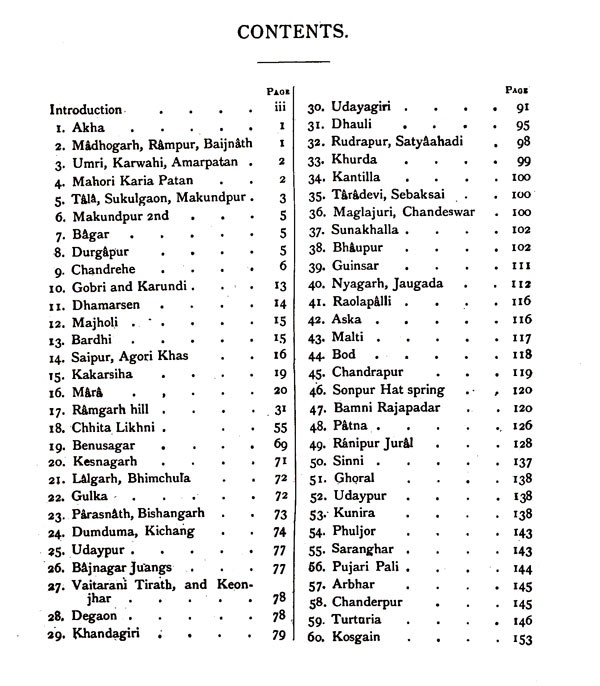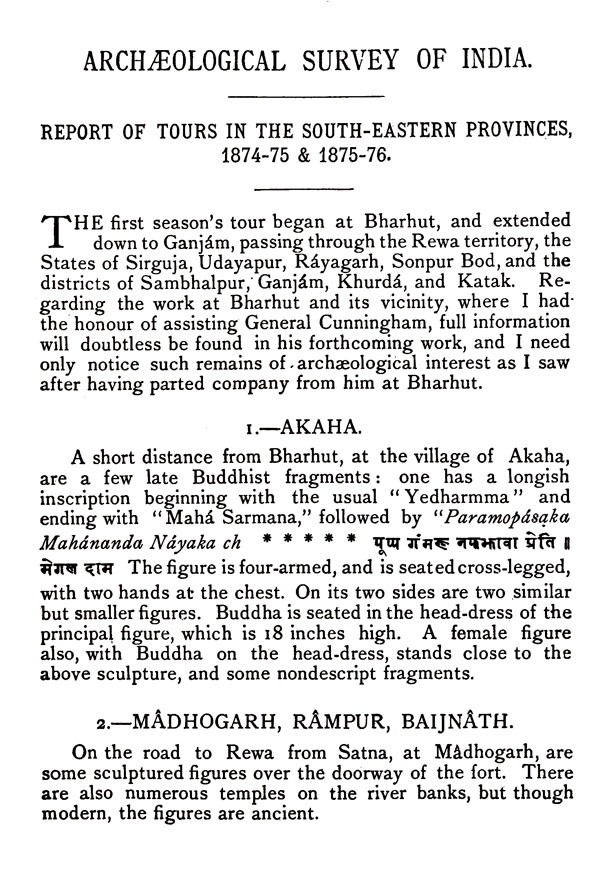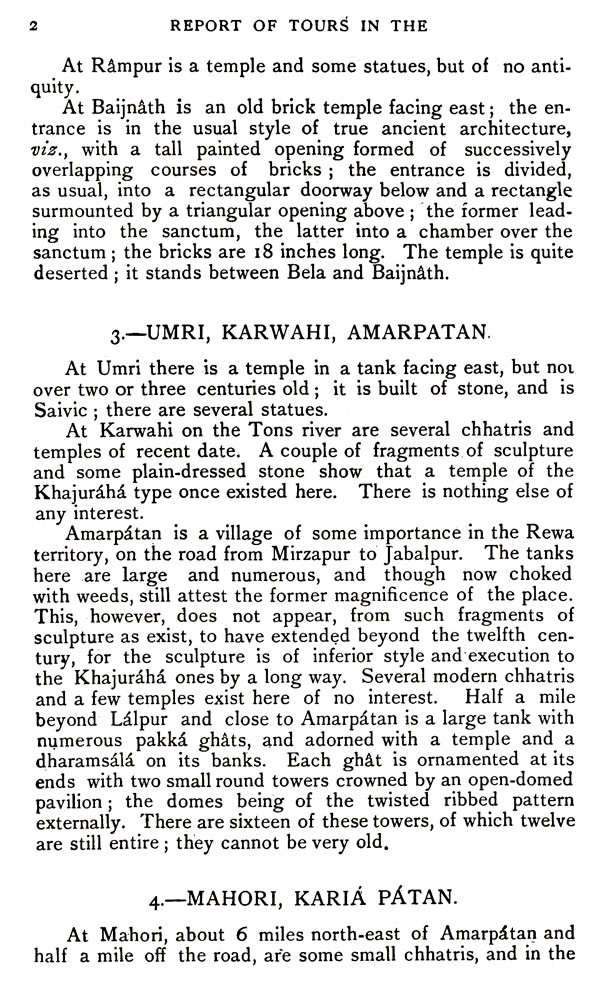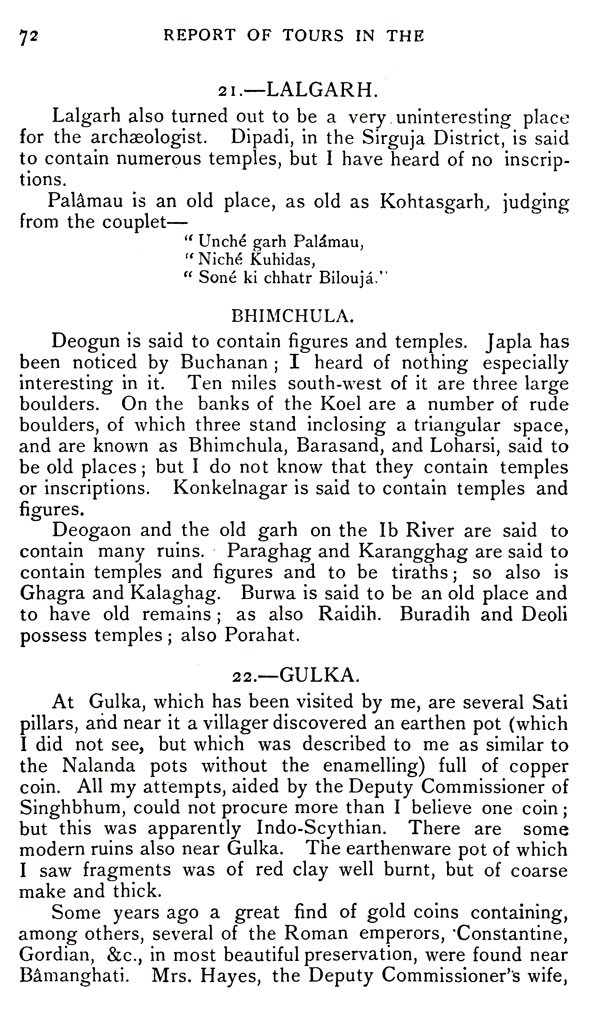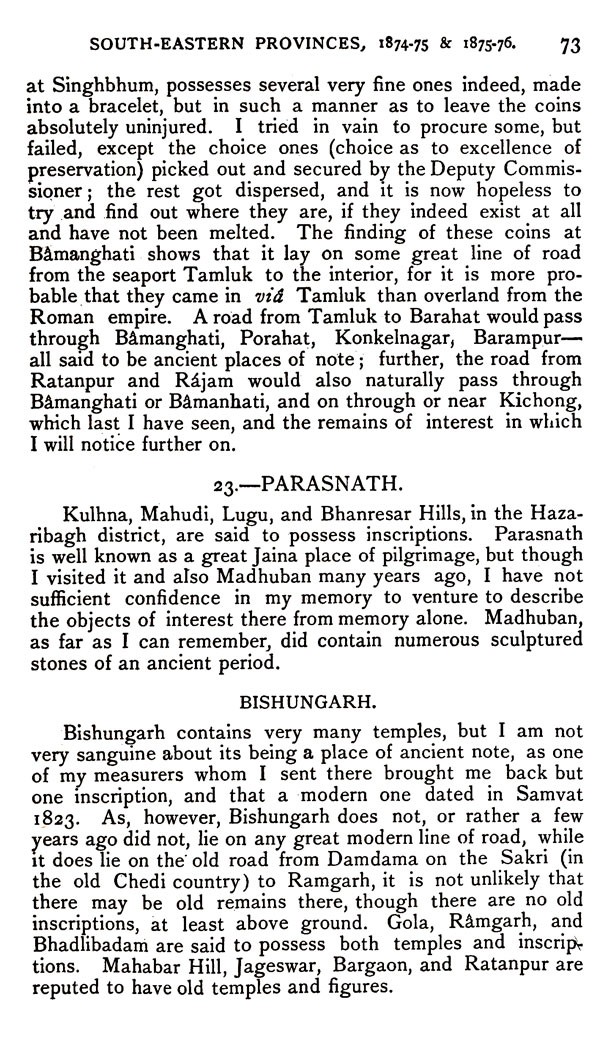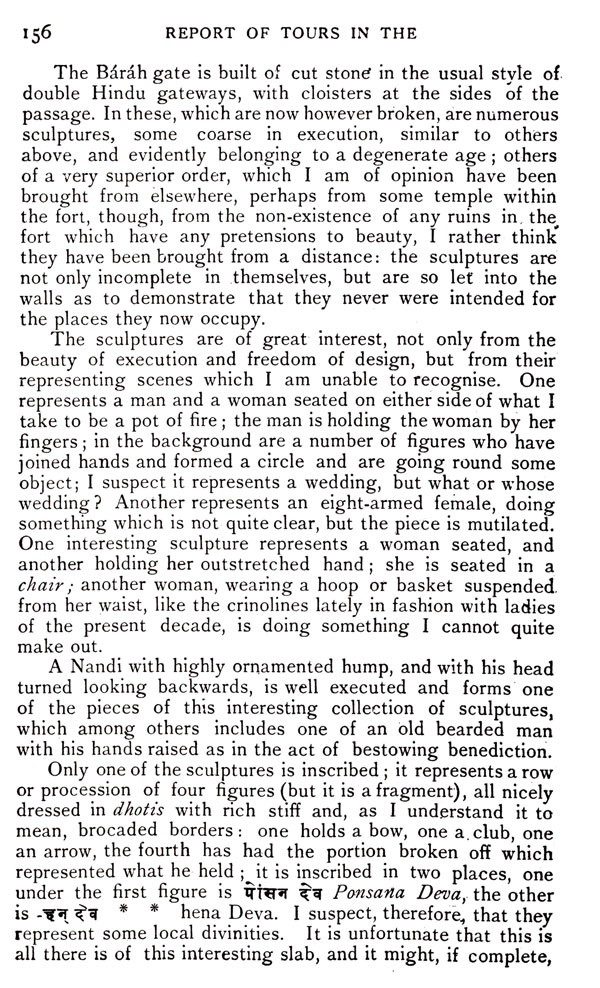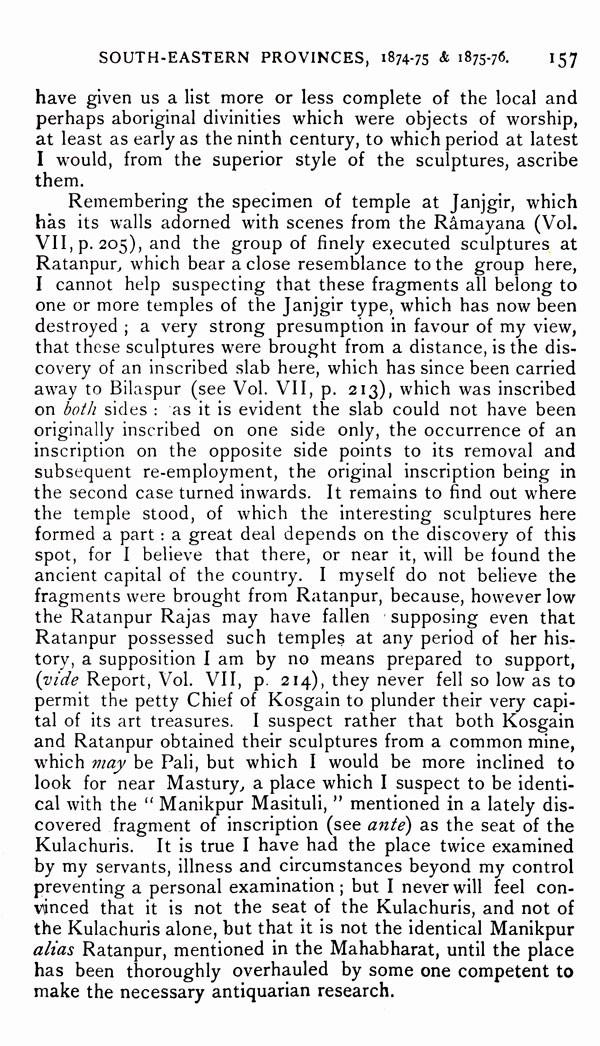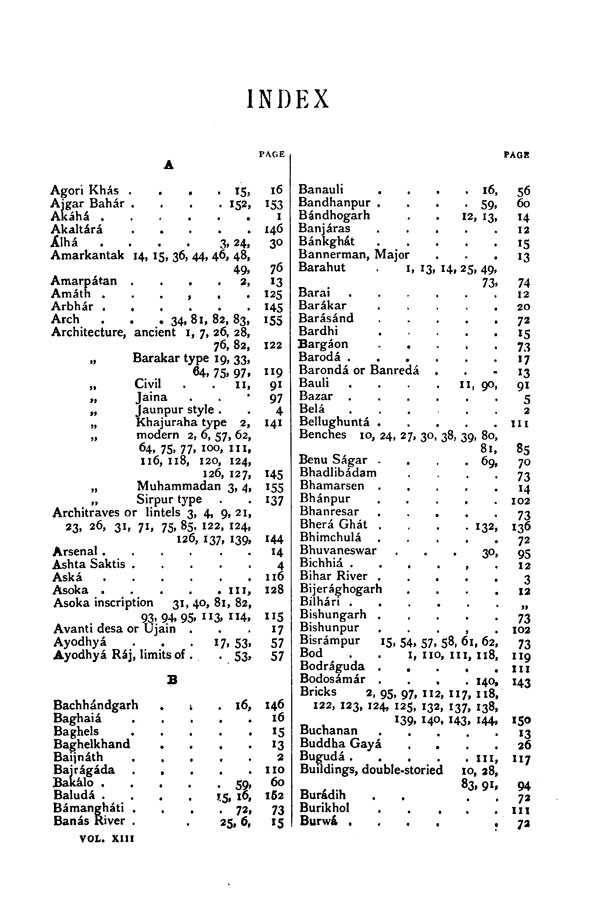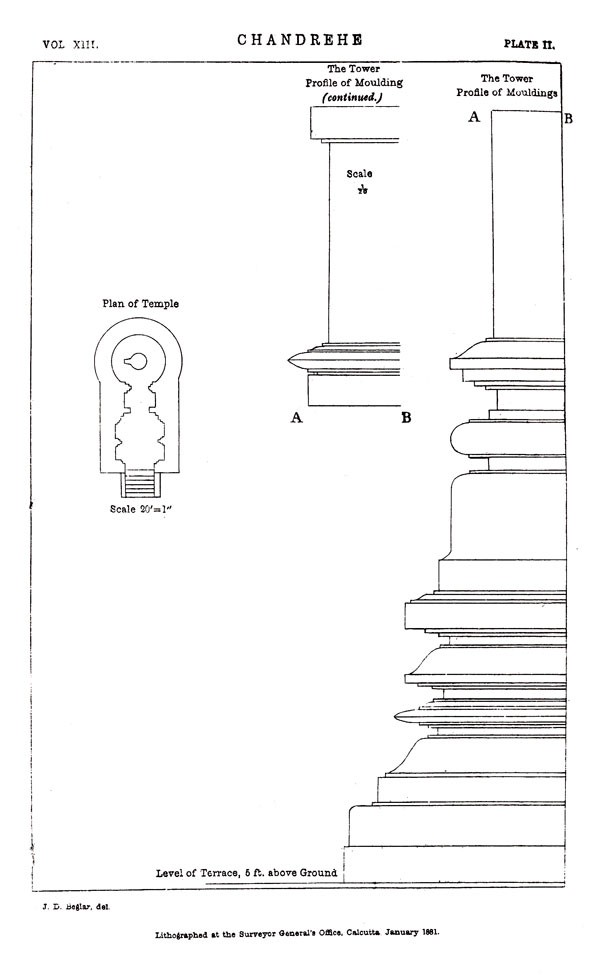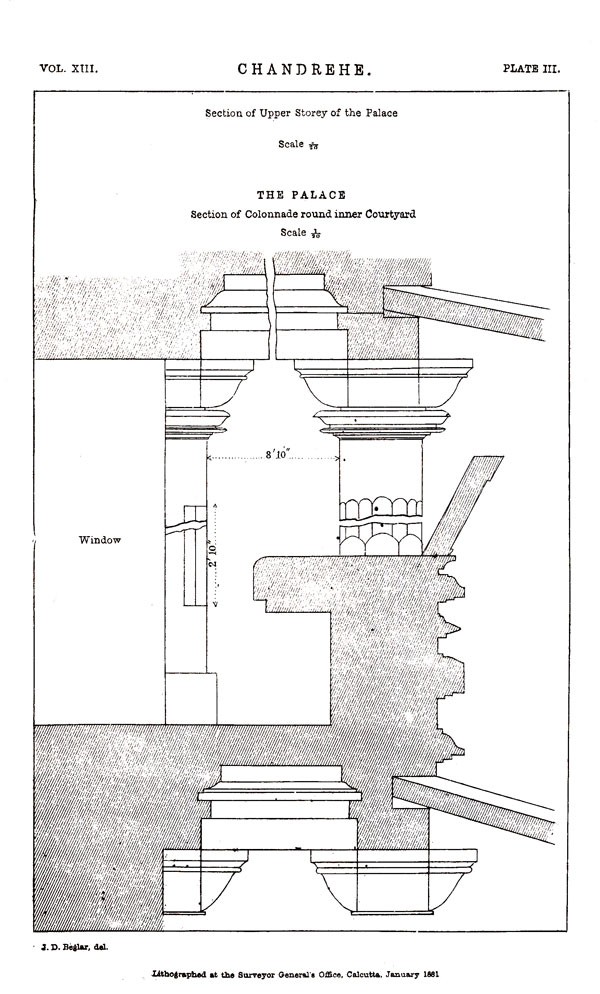
ASI Report of Tours in the South- Eastern Provinces (Volume XIII)
Book Specification
| Item Code: | AZB505 |
| Author: | J.D. Beglar and A. Cunningham |
| Publisher: | Archaeological Survey of India |
| Language: | English |
| Edition: | 2000 |
| Pages: | 216 (Throughout B/W Illustrations) |
| Cover: | HARDCOVER |
| Other Details | 9.8 x 6.5 inches |
| Weight | 610 gm |
Book Description
THE two tours which Mr. Beglar has described in the present volume deal chiefly with the little known and unexplored places of the South-Eastern Provinces lying between Chhattisgarh and Katak. But there are also some interesting notices of places in Rewa, and the Central Provinces on the west, and in Orissa on the east. Some of these were previously quite unknown, such as Chandrehi on the Son River in Rewa, Turturia in the Central Provinces, and RanipurJural in the State of Karund. At the last-named place there is a very fine example of the Indian Hypæthral Temple. of which only a few specimens now exist. This site is otherwise interesting, as it possesses many other temples of various periods.
The most ancient of the places visited by Mr. Beglar are the famous sites of Khandagiri, Udayagiri, and Dhauli, with their well-known rock edicts of Asoka. The short inscriptions in the caves of the Ramgarh Hill in Sirguja are only a little later. The numerous caves at Mara are entirely without inscriptions, but they are interesting from their extent, as well as from their position in the heart of a very wild country.
Of a much later date are the fine Brahmanical temples of Chandrehi and Turturia, of which some views are given in the accompanying plates. When these temples were built, the arts of architecture and sculpture in the Central Provinces must have been quite as flourishing as in any other part of India. The temples at Markandi on the Wen-Ganga River, and of Boram Deo in the Kawarda State of Chattis. garh, also bear witness to the same fact. I conclude therefore that the whole of this part of the country must then have belonged to the powerful Kulachuri Rajas of Chedi, and not to the aboriginal Gonds, whose power was confined to the hills.
**Contents and Sample Pages**
